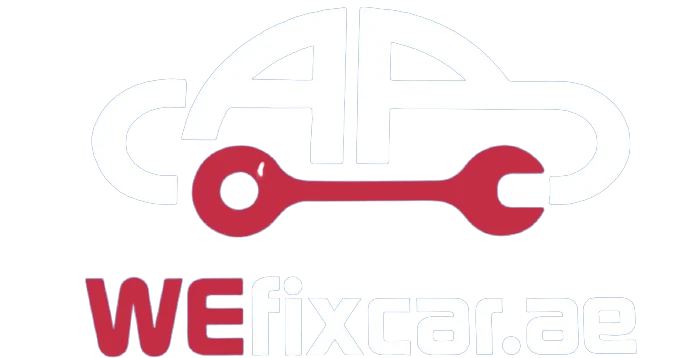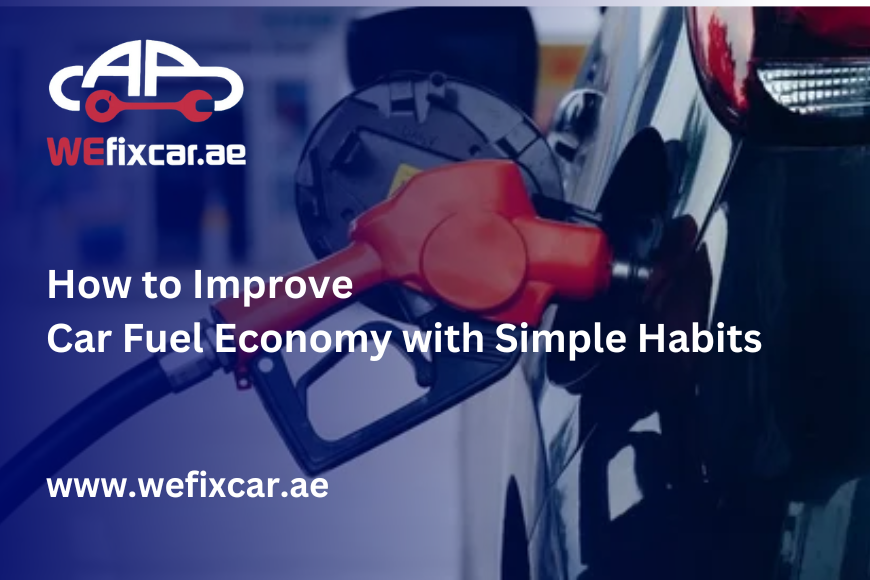How to Improve Car Fuel Economy with Simple Habits
In today’s world, fuel economy is more important than ever. With rising fuel costs and increasing environmental concerns, driving a fuel-efficient vehicle is not just a matter of convenience—it’s a necessity. Luckily, improving your car’s fuel economy doesn’t require a new car or costly modifications. Simple driving habits can significantly enhance your vehicle’s efficiency and reduce the amount of fuel you use.
In this blog, we’ll share eco-driving techniques, discuss the importance of maintaining optimal tyre pressure, and offer other tips for boosting fuel efficiency with minimal effort.
Why Fuel Economy Matters
Fuel economy refers to how efficiently your car converts fuel into distance. The better the fuel economy, the fewer stops you’ll need at the gas station, saving both money and time. A fuel-efficient car also contributes to reducing your carbon footprint, making eco-friendly driving habits essential in today’s environmentally conscious world.
In addition, good fuel economy often correlates with the overall health of your car. Drivers who practice fuel-efficient driving tend to maintain their cars better, leading to fewer repairs and increased vehicle lifespan.
1. Practice Eco-Driving for Maximum Fuel Efficiency
Eco-driving is all about adjusting your driving style to reduce fuel consumption without compromising safety. By focusing on how you accelerate, brake, and maintain speed, you can improve your fuel economy by up to 20%. Here’s how to implement eco-driving:
Key Eco-Driving Habits:
- Smooth Acceleration: Gradual acceleration prevents excessive fuel consumption. Instead of flooring the gas pedal, ease into it to maintain a steady speed.
- Avoid Rapid Braking: Anticipate traffic conditions ahead of time and reduce speed early to avoid sudden braking. Sudden stops use more fuel, while gradual deceleration saves energy.
- Drive Steady Speeds: Maintain consistent speeds on highways or freeways. Use cruise control to avoid fluctuating speeds, which can waste fuel.
- Use Higher Gears: Driving in higher gears at lower speeds reduces engine strain, improving fuel efficiency.
Want to boost your fuel economy with eco-driving tips? Book a vehicle health check at We Fix Car today and ensure your car is road-ready!
2. Keep Your Tyres at Optimal Pressure
Maintaining optimal tyre pressure is one of the easiest and most effective ways to improve fuel efficiency. Under-inflated tyres cause more rolling resistance, meaning your car needs more fuel to maintain speed. Over-inflated tyres, on the other hand, can lead to reduced traction and increased tyre wear.
How to Check and Maintain Optimal Tyre Pressure:
- Use a tyre pressure gauge: Check your tyre pressure once a month using a reliable tyre pressure gauge.
- Refer to your car’s manual: Your car’s manufacturer provides the ideal tyre pressure in the owner’s manual or on a sticker inside the driver’s side door.
- Do it when tyres are cold: Tyre pressure readings are most accurate when tyres are cool, so check before driving for long distances.
Properly inflated tyres not only improve fuel efficiency, but they also ensure your safety by improving handling and braking performance.
3. Reduce Vehicle Weight for Better Fuel Economy
The heavier your vehicle, the harder the engine has to work to move it, leading to higher fuel consumption. Reducing unnecessary weight in your car can help boost fuel economy.
How to Reduce Weight in Your Vehicle:
- Remove unnecessary items: Clean out the trunk and back seat. If you don’t need it, don’t carry it.
- Avoid roof racks or carriers: If you’re not using them, remove them. Roof racks create aerodynamic drag, which can lower fuel efficiency.
- Limit the use of heavy accessories: The more your vehicle weighs, the more fuel it uses. Keep accessories like extra cargo or aftermarket parts to a minimum.
Looking for ways to optimize your car for better fuel economy? Let We Fix Car help with routine checkups and weight-reducing upgrades to keep your car performing at its best!
4. Minimize Idling Time
When you leave your engine running while idling, your car is consuming fuel without getting anywhere. Idling for more than 10 seconds uses more fuel than restarting the engine.
How to Reduce Idling:
- Turn off the engine when stopped: If you’re waiting for more than 30 seconds (like at a long red light or in a traffic jam), it’s more fuel-efficient to turn off your engine and restart it when you’re ready to go.
- Avoid long idles at drive-thrus: Turn off your engine while waiting in a drive-thru or other long stop.
Being mindful of how long your car idles will help you conserve fuel and reduce emissions.
5. Plan Your Trips Efficiently
How you plan your trips can also affect your fuel economy. Consolidating errands or choosing the most direct route can save you both time and fuel.
Tips for Efficient Trip Planning:
- Combine errands: If you need to make multiple stops, try to combine them into a single trip to avoid unnecessary driving.
- Use navigation apps: Avoid getting stuck in traffic by using real-time traffic apps like Google Maps or Waze. These apps can help you avoid congested areas and save fuel.
- Drive during cooler parts of the day: Driving in the early morning or evening hours helps maintain optimal engine temperature, improving fuel efficiency.
6. Use Air Conditioning Wisely
While air conditioning can make hot days more comfortable, it’s important to use it wisely, as it can impact fuel consumption. The A/C system puts extra strain on the engine, requiring more power to operate.
How to Use Your Car’s A/C Efficiently:
- Limit A/C use: Use the air conditioning sparingly, especially when driving at low speeds.
- Ventilate the car first: When entering your car, open the windows for a few minutes to let out the hot air before turning on the A/C.
- Use recirculated air: This can help your car cool down faster and use less energy.
Frequently Asked Questions About Fuel Economy
1. Does driving at high speeds decrease fuel economy?
Yes. Driving at high speeds significantly increases fuel consumption. For optimal fuel economy, it’s best to drive at moderate speeds (55-65 mph) on highways.
2. How much can I improve my fuel economy by using eco-driving techniques?
By adopting eco-driving habits, you can improve your fuel economy by up to 20%. This can lead to significant savings over time, especially with long-term driving.
3. How often should I check my tire pressure?
You should check your tire pressure at least once a month. Proper tyre pressure ensures fuel-efficient driving and prolongs the lifespan of your tyres.
4. Will using a fuel injector cleaner improve fuel economy?
Yes, a fuel injector cleaner can help optimize fuel flow, reduce fuel consumption, and restore engine performance. However, this is more of a supplementary method rather than a primary solution for improving fuel economy.
5. Is it better to use premium fuel for better fuel economy?
Unless your car’s manufacturer recommends premium fuel, using it may not improve fuel economy and could be an unnecessary expense. Stick with the type of fuel recommended for your vehicle.
Conclusion
Improving your fuel economy doesn’t require drastic changes—simple habits like eco-driving, maintaining optimal tyre pressure, and reducing vehicle weight can go a long way in boosting your car’s efficiency. Not only will these habits save you money on fuel, but they will also contribute to a greener environment.
Start implementing these tips today and experience the benefits of fuel-efficient driving.
Schedule your next fuel-efficiency check at We Fix Car and get your car running at its best for longer!



